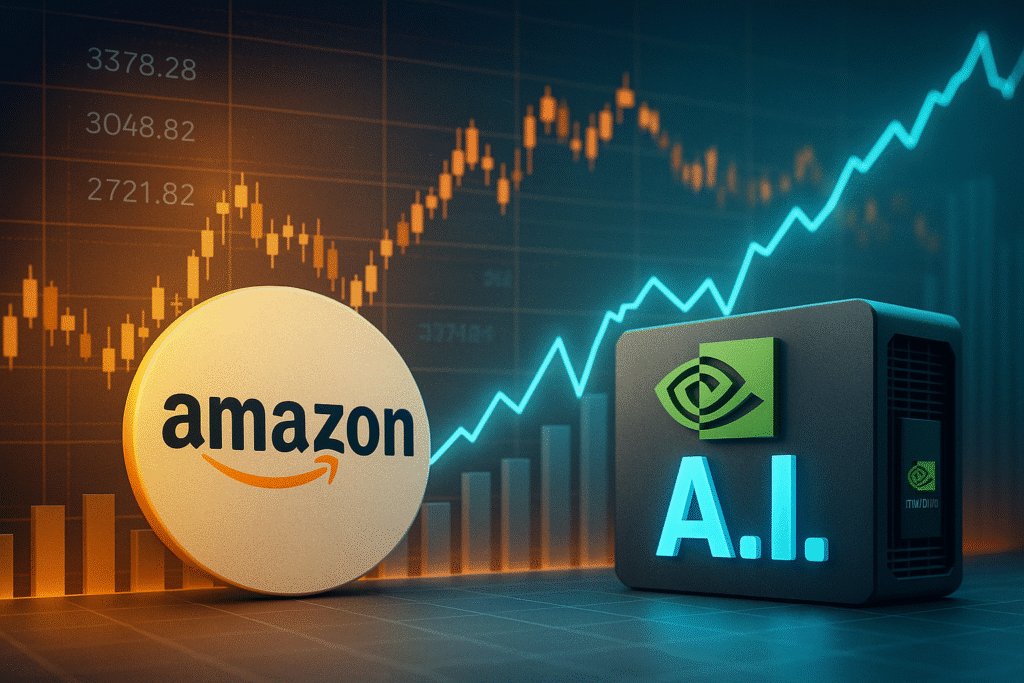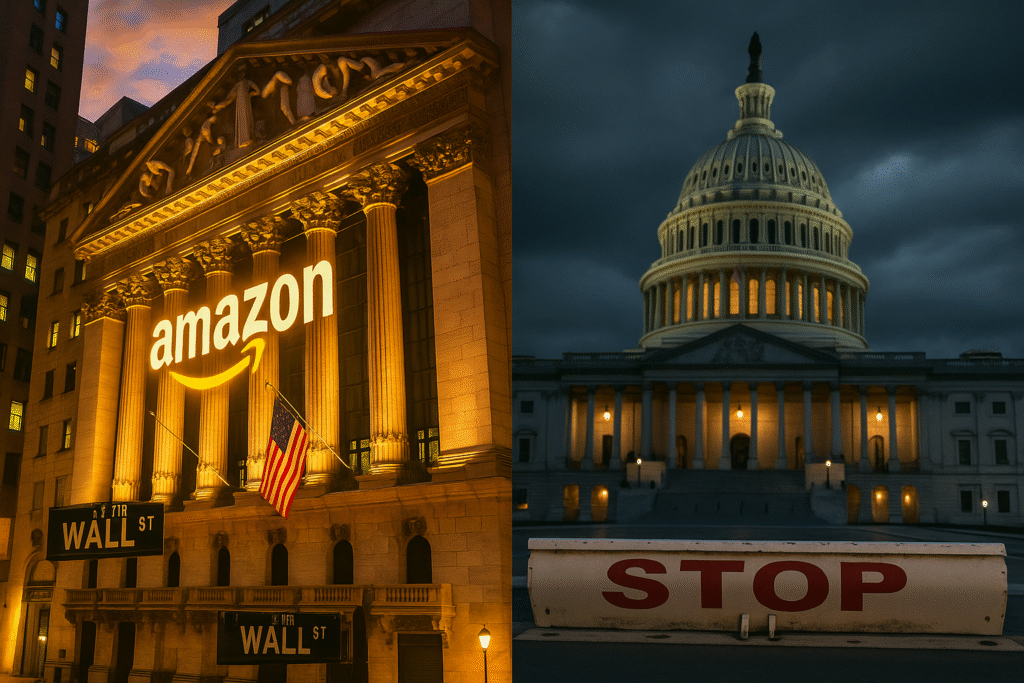Amazon Doubles Down on the AI Infrastructure Arms Race
Amazon (AMZN) shares surged Monday after the company announced a $38 billion deal with OpenAI (OPAI.PVT), allowing the ChatGPT developer to run large-scale artificial intelligence workloads on Nvidia GPUs hosted in Amazon Web Services (AWS) data centers.
The partnership will see OpenAI immediately begin deploying its models on Amazon’s cloud-based AI infrastructure, scaling up to full computing capacity before the end of 2026.
In practical terms, it means hundreds of thousands of Nvidia’s latest GPUs — the same chips driving the global AI revolution — will be used to power OpenAI’s growing portfolio of products.
“This collaboration reinforces AWS as one of the central pillars of global AI infrastructure,” one industry analyst noted. “Amazon isn’t just renting servers anymore — it’s renting the future of compute.”
Part of a Broader AI Power Shuffle
The deal marks another milestone in the arms race for AI infrastructure, as major cloud providers strike multi-billion-dollar alliances to meet insatiable demand for compute power.
OpenAI has now secured:
- A $300 billion deal with Oracle (ORCL) for large-scale compute hosting.
- Over $22 billion in contracts with CoreWeave (CRWV) for data center expansion.
- Strategic hardware partnerships with Broadcom (AVGO), AMD (AMD), and Nvidia (NVDA).
These “circular” AI infrastructure deals — where tech giants invest heavily in each other’s capacity — have fueled concerns about overextension, as investors question whether AI demand can sustain these unprecedented levels of spending.
OpenAI’s own costs are projected to exceed $1 trillion by 2030, while its revenue remains only a fraction of that.
Amazon’s Strategic Play: Locking In AI Dominance
For Amazon, the OpenAI deal serves multiple strategic purposes:
- It cements AWS’s relevance in the new AI era, where hyperscale compute is the key differentiator.
- It helps Amazon rival Microsoft (MSFT), which already maintains deep ties with OpenAI through Azure.
- It positions AWS as the most diversified AI infrastructure provider, working with multiple major AI labs — not just one.
The announcement follows a strong third-quarter earnings beat for Amazon last week, which sent its shares to an all-time high.
AWS also revealed it had completed a massive AI data center project, including plans to deliver one million custom AI chips to OpenAI’s competitor Anthropic by the end of 2025.
Together, these moves underscore Amazon’s broader strategy: to dominate the backend of the AI economy — where models, chips, and compute capacity converge.
AI Mania or Measured Expansion?
While the market cheered the news, some analysts are beginning to question the sustainability of AI spending.
The cycle of cloud providers building infrastructure for AI labs — which then pay for it with investor capital — has raised echoes of past tech bubbles, albeit with much higher stakes and hardware dependency.
At the same time, the deals reflect real, structural demand for compute power, as AI models grow exponentially more complex.
Amazon’s cloud ecosystem stands to benefit regardless of which AI company ultimately dominates.
WSA Take
Amazon’s latest deal with OpenAI reinforces what’s becoming clear across the market — AI infrastructure is the new oil, and hyperscalers like Amazon, Microsoft, and Google are the refineries.
By linking OpenAI’s workloads to Nvidia’s chips and AWS’s global reach, Amazon is securing a long-term revenue stream from the very core of the AI economy.
But there’s a flip side: spending is accelerating faster than monetization, and at some point, markets will demand proof that the trillion-dollar AI buildout can generate sustainable returns.
Read our recent coverage on the Nasdaq’s Climb With Reignited AI Rally
Explore the latest coverage on the Wall Street Access homepage.
Disclaimer:
Wall Street Access does not work with or receive compensation from any public companies mentioned. Content is for informational and educational purposes only.








